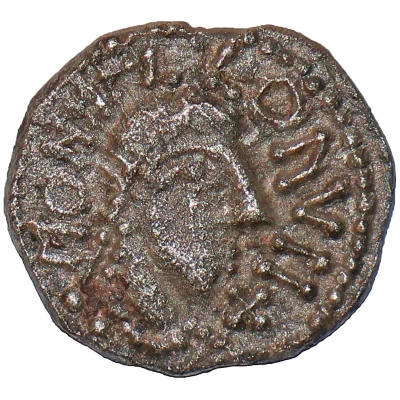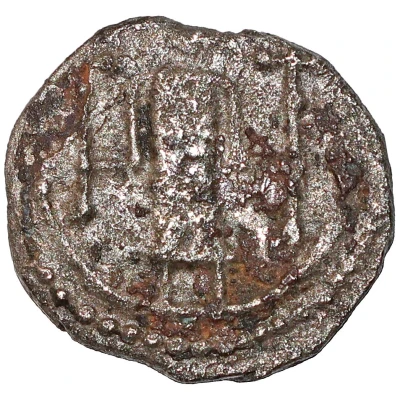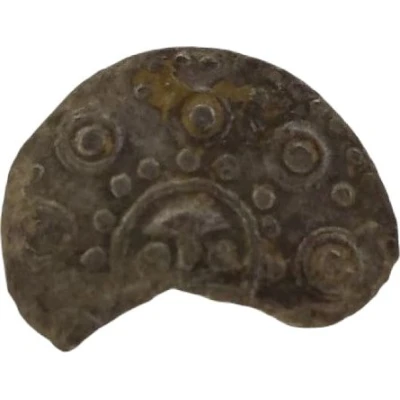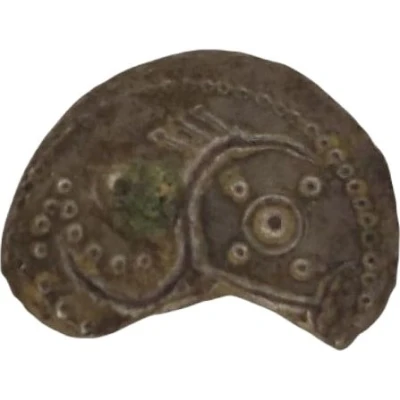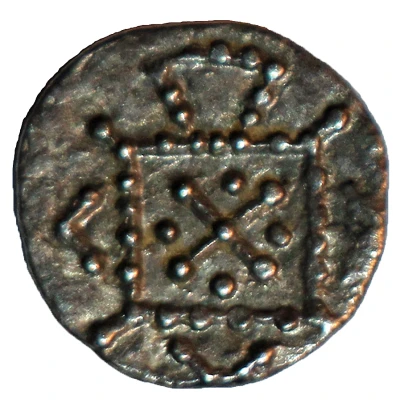
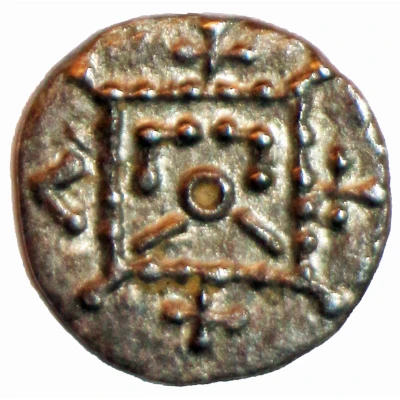

Sceat Saltire-standard; Type
| Billon | 0.79 g | 12 mm |
| Issuer | Early Anglo-Saxon (Kingdoms of British Isles and Frisia) |
|---|---|
| Type | Standard circulation coin |
| Years | 710-760 |
| Value | 1 Sceat |
| Composition | Billon |
| Weight | 0.79 g |
| Diameter | 12 mm |
| Shape | Round (irregular) |
| Technique | Hammered |
| Orientation | Variable alignment ↺ |
| Demonetized | Yes |
| Updated | 2024-10-09 |
| Numista | N#282528 |
|---|---|
| Rarity index | 93% |
Reverse
Beaded standard, with diagonal to each corner, containing mirrored angular symbols around central annulet, chevron left, cross pommée to other sides.
Lettering: [uninscribed]
Comment
Early Anglo-Saxon (600-775), Sceatta coinage (c.675-c.760), Eclectic Sceattas (c.710-c.760), Saltire-standard and geomteric symbols, Type 70, many varieties, typically base. Abr. 13.160-170; North 55Eclectic sceattas are groups of types, related often by a common reverse motif (Triquetras, Celtic cross, interlace, saltire, annulet cross groups and Type 70) that do not easily fit into the main alphabetical classification of the secondary phase, even though there may be some features in common with or derived from the types therein.
Interesting fact
One interesting fact about the Standard circulation coin Sceat (Saltire-standard; Type 70) (710-760) from Early Anglo-Saxon (Kingdoms of British Isles and Frisia) made of Billon weighing 0.79 g is that it features a unique combination of Christian and pagan elements in its design. The coin's obverse (front) side features a cross, which symbolizes the Christian faith, while the reverse (back) side features a stylized image of a bird, which is believed to represent the pagan belief in the importance of birds as messengers between the human and divine realms. This blending of religious symbols reflects the cultural and religious diversity of the Early Anglo-Saxon period and highlights the complexities of religious transition during that time.
